Results of the 2017 of the Year for the Russian Defense Industry
Supply of weapons and military equipment in the framework of the implementation of state defense orders
According to Deputy Prime Minister of Russia Dmitry Rogozin, the state defense order in 2017 will be executed at 97-98%. On the air of the Russia 24 TV channel on Wednesday, December 27, he noted that the figures would be no worse than the 2016 performance of the year. Earlier in February, 2017, the Deputy Minister of Defense of Russia, Yuri Borisov, in an interview with Rossiyskaya Gazeta, said that more than 2017 trillion rubles would be allocated to fulfill the state defense order for 1,4. According to him, the main share of funds, more than 65%, was planned to be sent for serial purchases of modern types of weapons and military equipment.
We can already say that the large-scale state armaments program up to 2020 has seriously stimulated the development of the Russian defense industry. Over the past 5 years, the share of modern technology in the Armed Forces of the Russian Federation has increased by 4 times, and the pace of military construction increased by 15 times. About this December 22 2017, Russian Defense Minister Sergei Shoigu reported to President Vladimir Putin in the framework of the final expanded board of the military department, which was held at the Strategic Missile Forces Academy. Currently, there is a systematic process of re-equipping the Russian army with new weapons, in 2020, the share of such weapons in the army should be 70%. For example, in 2012, the share of modern weapons and military equipment in the troops was only 16%, and at the end of 2017, it was about 60%.
As part of the final expanded collegium of the military department, the immediate plans for the rearmament of troops were announced. Thus, the share of modern weapons in the nuclear triad of the Russian Federation has already reached 79%, and by 2021, Russian ground-based nuclear forces should be equipped with new weapons at up to 90%. This also includes missile systems that can confidently overcome even promising missile defense systems. It is planned that in 2018, the share of modern technology in the Russian army will reach 82% in the Strategic Nuclear Forces, 46% in the Ground Forces, 74% in the Air and Space Forces, and in the Naval navy - 55%.
Early December 22 TASS spoke about the main deliveries of weapons and equipment to the troops on the basis of 2017 year. Following the results of the expiring year, enterprises of the Russian defense industry transferred to formations and military units Western Military District (ZVO) more 2000 New and modernized weapons and military equipment (IWT). Troops Eastern Military District (BBO) got into service more 1100 units of weapons and military equipment. Including, re-equipment of missile units to the new Iskander-M missile systems, as well as Bastion, is being carried out; as a result of these actions, the combat power of the district has increased by more than 10%. In military units and compounds Southern Military District (South Military District) since the beginning of the year more than 1700 units of weapons and military equipment, this allowed to bring the share of modern types of weapons and equipment in the district to 63%. Thanks to the arrival of new military equipment, combat power Central Military District (CEC) over the past three years has grown by almost a quarter, in 2017, the district’s forces received about 1200 units of weapons and military equipment.
According to the Russian Minister of Defense, in 2017, more than 50 ships are being built for the country's Navy. The work is carried out within the framework of 35 state contracts; 9 lead and 44 serial warships and a support vessel are under construction on them. In total, in 2017, the Navy included 10 warships and combat boats, as well as 13 support vessels and 4 coastal missile systems “Ball” and “Bastion”. The composition of the marine aviation replenished with 15 modern aircraft and helicopters. According to the minister, the Ground Forces received 2055 new and modernized types of weapons, with which 3 formations and 11 military units were re-equipped, and the troops also received 199 drones. As part of the Russian Aerospace Forces, a special-purpose division and a military transport division were formed. 191 new aircraft and helicopters were received, as well as 143 air defense and missile defense weapons. In total, the Russian military-industrial complex produced 2017 combat aircraft and 139 helicopters in 214, Deputy Prime Minister Dmitry Rogozin spoke about this on the Russia 24 TV channel.
For the future of the defense industry it is important to increase the output of civilian products.
Russian defense enterprises can still count on the state defense order, but funds for upgrading the armed forces will not be allocated endlessly. The more the equipment of the armed forces will be with new military equipment, the less it will be ordered by the army from the domestic defense industry. The economic and political situation in which Russia is today also affects the financing of state procurement of arms. As part of the discussion of the state armaments program for 2018-2025 years, which has been continuing since the end of 2016, the initial requests of the Ministry of Defense have been reduced several times. The initial requests of the military department amounted to about 30 trillion rubles, but then were reduced by the government to 22 trillion rubles, and according to the latest data - to 19 trillion rubles.
In the near future, the Russian president sees the country's defense costs in 2,7-2,8% of GDP (in 2016, the figure was 4,7%). At the same time, it is planned to solve all the tasks set earlier for the modernization of the Armed Forces and the military-industrial complex, the RT website reports in Russian. The Russian Ministry of Defense and the defense industry are facing two strategic goals. The first is to bring to 2020 the share of modern military equipment in the Russian Armed Forces to 70%. The second is to bring the share of civilian products in the Russian defense industry to 2030% by 50 (in 2015, this figure was only 16%). Obviously, the second strategic goal directly follows from the first. The higher the equipment of the Russian army with new military equipment, the less military products will be ordered from Russian enterprises.
According to the forecasts of the Ministry of Industry and Trade of Russia, by the 2020 year, the growth of civilian output by defense enterprises is planned 1,3 times. Most likely, it is planned to ensure such a significant jump in production due to the mass production of new passenger aircraft of various classes. The Russian government is banking on the production of MS-21, IL-114-300, IL-112В, Tu-334, Tu-214 and Tu-204 passenger aircraft. It is expected that by 2025, the number of passenger aircraft produced in the country will increase 3,5 times - from 30 to 110 machines per year. In the future, the basis for the financial stability of the defense sector of the Russian economy should not be only long-term contracts concluded within the framework of the state arms procurement program. At meetings devoted to defense industry issues, Vladimir Putin has repeatedly said that an industrialist should look for new markets, which is also relevant today for Russian arms exports.
It is worth noting that the partial reorientation of the defense complex to the production of civilian products is already underway in the regions, in particular, in Udmurtia, which is a recognized forge of Russian weapons. As told to journalists on Wednesday, December 27, First Deputy Prime Minister of the Udmurt Republic Alexander Svinin, following the results of 2017, the defense enterprises of the republic increased the output of civilian products by 10%. According to the official, the withdrawal of civilian OPK products to the market is an important task for the government of the republic in the context of a declining state defense order. The Deputy Prime Minister noted that in 2018, meetings with representatives of large Russian companies will be held every two weeks, this work should help in solving the problems of finding new markets for products of defense enterprises. In December, 2017 of the year, one meeting took place, during which the head of Udmurtia and the heads of five defense enterprises of the republic, as well as the Chepetsk Mechanical Plant, met with the leadership of the United Aircraft Building Corporation (UAC). The meeting discussed the industrial potential of defense enterprises, which can be involved in the field of aviation.
Export of weapons and military equipment
The final figures for the export of Russian weapons on the basis of 2017, yet. But already in March of this year, within the framework of the 14 international LIMA 2017 naval and aerospace exhibition, Viktor Kladov, director of international cooperation and regional policy of the state corporation Rostec, as well as the head of the joint delegation of the corporation and Rosoboronexport, told reporters about According to the results of 2017, the export of Russian weapons will exceed 2016 of the year. At the same time, in the 2016 year, Russia exported weapons and military equipment worth 15,3 billion dollars.
Export deliveries are the strength of the Russian defense industry and the entire industry of the country Russia's positions on the world arms market are traditionally strong. In arms exports, our country ranks second in the world after the United States. The market for armaments and military equipment is as follows today: 33% is in the USA, 23% is in Russia, and China is in third place with a serious lag, 6,2%. At the same time, according to experts, by 2020, the capacity of the world arms market could grow to 120 billions of dollars. The tendency of the international arms market is an increase in the share of purchases of military aircraft, including helicopters, and the demand for air defense systems and naval equipment is also growing. At the same time, according to military experts, the 2025% will already be 55% in the structure of arms procurement by countries of the world by 13, followed by marine equipment with a serious lag - about XNUMX%.
As writes edition Newspaper.ru, Rosoboronexport’s order book now exceeds 50 billions of dollars (with contracts executed from 3 to 7 years). The top five Russian customers are as follows: Algeria (28%), India (17%), China (11%), Egypt (9%), Iraq (6%). At the same time, about half of the supplied products already fall on aviation, another quarter on various air defense weapons. At the same time, experts note the growing competition of Russian arms from China, India, South Korea, Brazil and even Belarus.
If we talk about the most important export contracts of the 2017 of the year, they include the signing of the 10 August 2017 of the Russian-Indonesian agreement on the conditions for the acquisition by Indonesia of the 11 Russian-made Su-35 fighter jets. According to the agreement signed by the parties, the cost of acquiring 11 Russian fighters will be 1,14 billion dollars, of which half (570 million dollars) Indonesia is going to cover the supply of its own products, including palm oil, coffee, cocoa, tea, oil products, etc. This does not mean that the goods will physically arrive in Russia, as a rule, in such cases we are talking about exchange goods that can be easily sold on the markets.
The second very important defense contract for Russia concerns Turkey and its acquisition of the Triumph C-400 anti-aircraft missile system. This transaction was the main information occasion for a long time. At the end of December 2017, the head of the Rostec state corporation, Sergey Chemezov, revealed some details of this transaction in an interview with the journalists of the newspaper “Kommersant". According to him, the benefit of Russia from the supply of Turkey to the C-400 anti-aircraft missile system is that this is the first NATO country to buy our newest air defense system. Chemezov noted that Turkey bought the 4 C-400 division for a total of 2,5 billion dollars. According to Chemezov, the Turkish and Russian Finance Ministry have already completed negotiations, it remains only to approve the final documents. “I can only say that 45% of the total amount of the contract Turkey pays Russia as an advance, and the remaining 55% is Russian credit funds. We are planning to start the first deliveries under this contract in March 2020 of the year, ”said Sergey Chemezov about the terms of the deal.
Also in December, 2017, the Stockholm International Peace Research Institute (SIPRI), published the Top-100 ranking of the largest military-industrial companies in the world in terms of sales in the 2016 year (both in domestic and foreign markets). The total sales of weapons of Russian companies that are included in this rating increased by 3,8%, in 2016 they sold weapons for 26,6 billion dollars. The twenty largest companies include: United Aircraft Corporation (UAC) - 13 place with estimated sales of 5,16 billion dollars and United Shipbuilding Corporation (USC) - 19 place with estimated sales of 4,03 billion dollars. On the 24 line of this ranking is located Concern EKR Almaz-Antey with estimated sales of 3,43 billion.
Pros and cons for Russian arms exports in 2017
The 2017 year brought both positive and negative points for Russian AME export prospects. On the positive side can be attributed to the success of the Russian army, demonstrated in Syria. The fighting in Syria is a very strong advertisement for Russian and even Soviet weapons. In the war in Syria, even the obsolete models of Soviet-made weapons and military equipment showed themselves well, reaffirming their high combat qualities, as well as an excellent level of reliability.
Over the period from 2015 to 2017, during the fighting in Syria, the Armed Forces of the Russian Federation checked and tested more than 200 samples of weapons and military equipment in combat conditions. Mainly, all tested weapons confirmed the tactical and technical characteristics declared by the manufacturers. Of course, the operation in Syria has become a real benefit performance for modern Russian aviation technology and combat helicopters. For example, many countries are seriously considering the possibility of purchasing a modern Russian front-line bomber Su-34. However, in Syria, well-proven different models of weapons. For example, in Syria, a modernized high-precision 152-mm projectile Krasnopol was used, a video recording of the use of these projectiles can be found on the Internet today, this high-precision ammunition may also interest potential customers.
The Russian military-industrial complex for its development must remain competitive and look for new export markets for its products. In the face of declining state defense orders, this is especially important and relevant. Of course, Russia in the foreseeable future will not lose second place to the arms exporter in the world, but the struggle for sales in monetary terms will only increase. New “second-tier” players are entering the market, who have a well-developed high-tech industry. For example, in the published SIPRI ranking, growth of the indicators of the military-industrial companies of South Korea, which sold military products by 2016 billion dollars (growth by 8,4%), was highlighted in the 20,6. Russian enterprises must be prepared for the fact that competition in the international arms market will only increase.
With a minus sign for Russian arms exports, and therefore for companies of the national defense industry, can be considered newswhich appeared at the end of October 2017 of the year. Under pressure from Congress, the administration of US President Donald Trump called a list of 39 Russian defense companies and intelligence agencies, cooperation with which could lead to company and government sanctions around the globe. At the same time, how seriously the American leadership will approach the execution of the new sanctions package can be seen only in the future. Experts point out that the Trump government has the opportunity to deliver a really tangible blow to the export of Russian weapons, and to sabotage the introduction of tough restrictive measures.
Almost half of the newly published sanctions list were enterprises of the state corporation Rostec, which is the monopoly agent for the export of Russian weapons to the international market. According to experts of the Atlantic Council in the field of economic sanctions: “Placing new Russian companies in the defense-industrial complex on the sanctions list will increase the potential risk for any state and any company that has business relations with them, forcing them to make a choice: either conduct business with the United States, either with these Russian structures. ” In Washington, they can use new sanctions as a possible blow to the main competitor in the international arms market. With the help of new sanctions, the US government will be able to put pressure on third countries of their governments and companies. Therefore, the Russian military-industrial complex will have to work with the possibility of these risks and increasing sanctions pressure, which will not disappear anywhere in the foreseeable future.
As noted in an interview with journalists "AIF”Ruslan Pukhov, director of the Center for Analysis of Strategies and Technologies, is well-known in Russia in the field of armaments, Russia is not included even in the 10 of the leading states of the world today, but the country is second in arms trade Further, it is already very difficult to increase sales: “Our own” sales markets are saturated (“Cornet” Russia has already armed half the world, “drying” has been delivered even to Uganda), and the sanctions have an effect. Therefore, we need to focus on keeping our second place - and the task is very complex, new approaches are needed. “I see two options. The first of them is the struggle for unconventional budgets: not the ministries of defense of potential customer states, as is mainly happening today, but the police, the Ministry of Emergency Situations, the border service and other departments, where there can still be reserves for the products of the Russian defense industry complex. The second is the struggle for non-traditional sales markets, that is, for the states where Russia practically did not work on military equipment. One of these states is Colombia, which has always been considered an American "garden", - said Ruslan Pukhov. It is worth noting that at the beginning of December 2017, Rosoboronexport took part for the first time in the Expodefensa 2017 exhibition in the capital of Colombia. This exhibition just fits into the strategy of finding new markets for Russian military products.
Used photos from rostec.ru
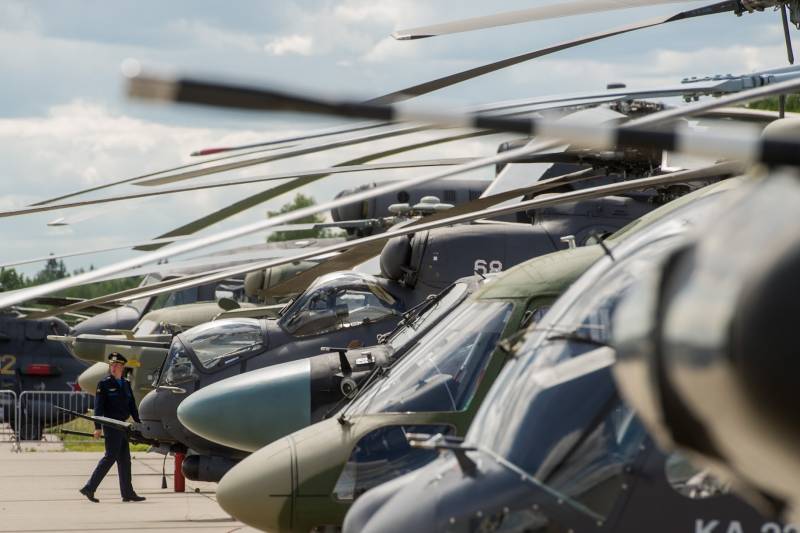
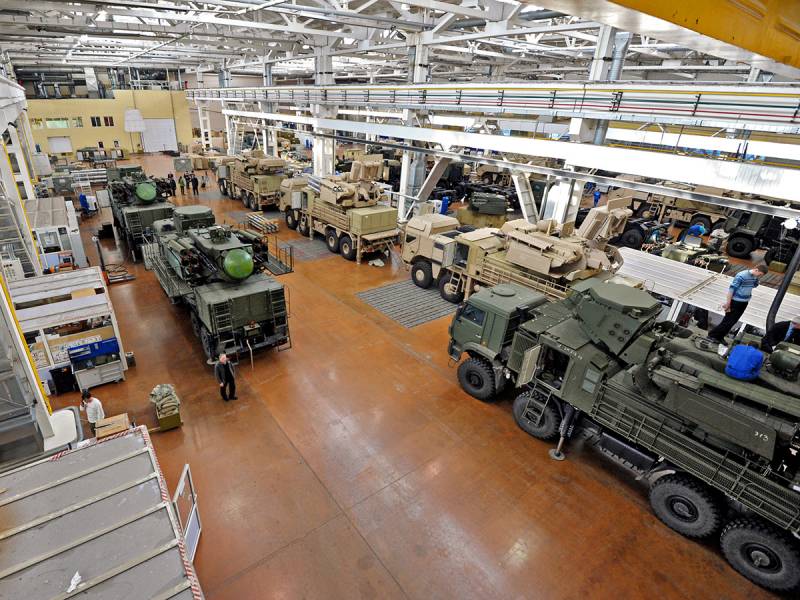
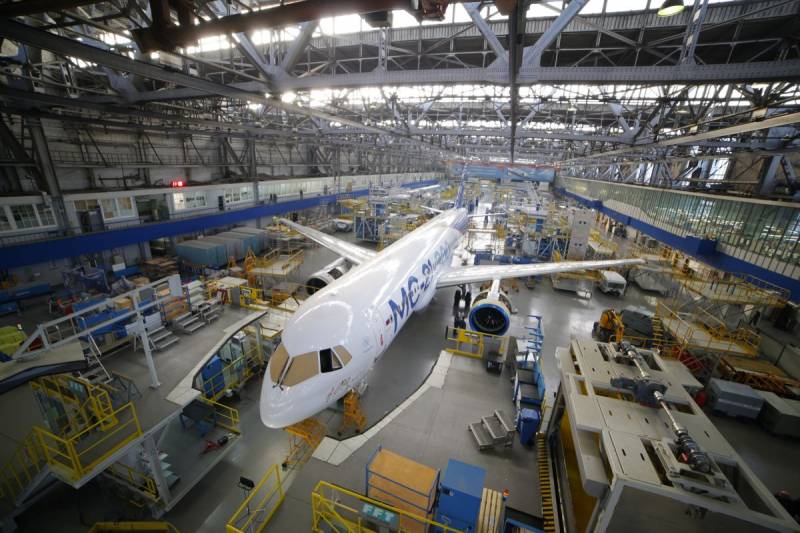
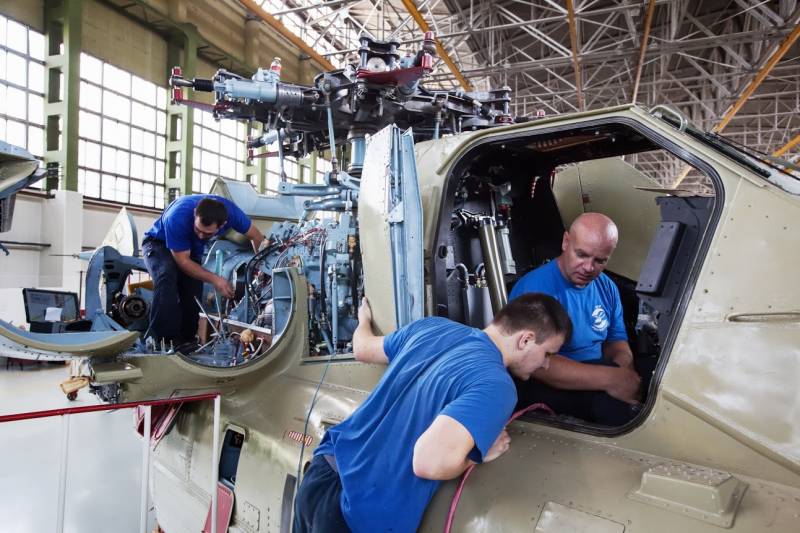
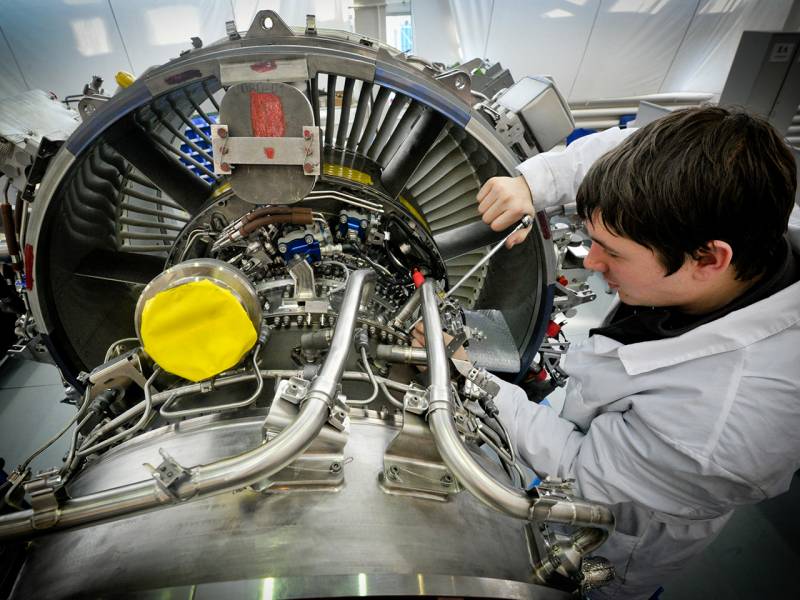
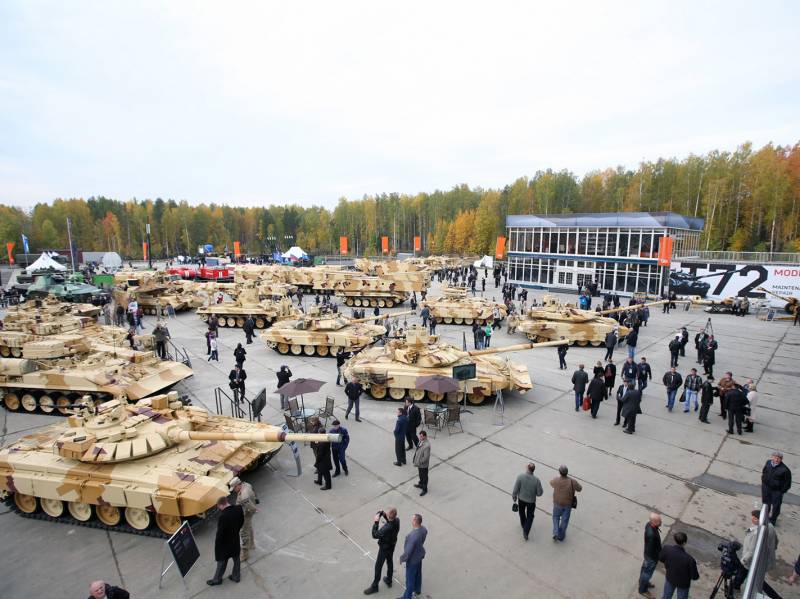
Information